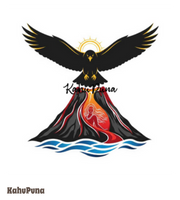Mornings with 'Aumākua
- wearepuna
- Jun 18, 2024
- 3 min read
"For all the magical powers aumakua are said to possess, the greatest may be their ability to connect human beings and the natural world."
"In Hawaiian mythology, an ʻaumakua (/ʔaʊmɑːˈkuə/; often spelled aumakua, plural, 'aumākua) is a personal or family god that originated as a deified ancestor, and which takes on physical forms such as spirit vehicles.
☆☆☆The Guardian Spirits
Guardian spirits come in natural or animal form. It is possible to have more than one “Aumakua,” or spirit guide, where a deceased ancestor took a life form to guide an individual. Many natives and locals tattoo one or all of the Guardian Spirits on the body. In Hawaiian tradition, the shark, gecko and owl are significant guardian spirits. A shark is known as a protector. The gecko is known as the animal that could communicate to the Gods and is a protector of homes. The owl or “Pueo,” is one of the oldest manifestations that flew over the Hawaiian lands before settlement. The owl was specifically skilled in battle and represents mysterious wisdom. (Shared from https://web.archive.org/web/20160821235257/https://www.olukai.com/journal/2014/11/03/the-meaning-behind-hawaiian-symbols/ )
An 'aumakua may manifest as a shark, owl, bird, octopus, or inanimate objects such as plants or rocks. The word ʻaumakua means ancestor gods and is derived from the Hawaiian words au which means period of time or era, and makua meaning parent, parent generation, or ancestor.
Hawaiians believed that deceased family members would transform into ʻaumakua and watch over their descendants with a loving concern for them while also being the judge and jury of their actions.
ʻAumakua were believed to watch over their families and hear their words, give them strength and guidance, warn them of misfortune or danger, give punishments to wrong-doers while also rewarding worthy people with prosperity in the after life, and pass on prayers from the living to the akua (gods).
ʻAumakua could give warnings of coming misfortune or danger, punishments, and guidance to their respective ʻohana (families). ʻAumakua relayed these messages to family members through hōʻike a ka pō (revelation in the night, dreams), visions, or physical manifestations. Hawaiians also believed that “just the nagging feeling that something is wrong” was a message sent from their ʻaumakua.
ʻAumakua were also protectors of their families. An example of this comes from the Puna district on Hawaiʻi island which was shared with anthropologist Martha Beckwith: “...this one family… had a supernatural helper or aumakua who appeared in the form of a particular shark. When any of the family go fishing, the shark appears. The aumakua obeys the voice of man. Name the fish you want and it will bring it. This family can never be drowned. If there is a storm and the boat capsizes, the shark appears and the men ride on its back.”
As protectors, ʻaumakua could also give mental or physical strength to ʻohana members who were in need of help but could not help themselves, primarily the keiki (children), the sick, and the elderly.
ʻAumakua could also bring punishment to families who offended or displeased them. These offenses included behavior like greed, dishonesty, and theft, breaking ʻai kapu, bathing in pools that were kapu (taboo), and eating the physical form of ones ʻaumakua. Punishments were often illnesses in the form of “diagnostic clues”, so a thief would develop a swollen hand or a sore foot would trouble a trespasser until they made restitution.
ʻAumakua also acted as judge and jury after a person's death. They had the power to punish or reward the personʻs spirit depending on whether or not that person lived a righteous life, or even send the spirit back to the body if it left the body prematurely in “apparent deaths”.
ʻAumākua could appear as:
ʻalalā - crow
manō - shark
pueo - a species of short-eared owl
heʻe - octopus
mea kanu - plant
pōhaku - rock
mo'o - lizard
Moa wahine - Mud hen
Puhi - Eel
ʻIole liʻiliʻi - Small field mice
Peʻelua - Caterpillars
ʻAumakua were able to take on Kino lau (many bodies, many forms) which means that they could change back and forth from “invisible people'' (poʻe or ka pō), animals, plants, and minerals.
ʻAumakua as animals could also inhabit plants that had similar characteristics or visual resemblance to that animal. For example, ʻaumakua as mackerel (ʻōpelu) were also associated with the lobelia plant (also called ʻōpleu) whose leaves are a similar shape and color as the fish.
Another really great article on 'aumakua is here ---> https://web.archive.org/web/20110628021529/http://www.mauimagazine.net/Maui-Magazine/November-December-2010/Hawaiis-Spirit-Guardians/




Comments